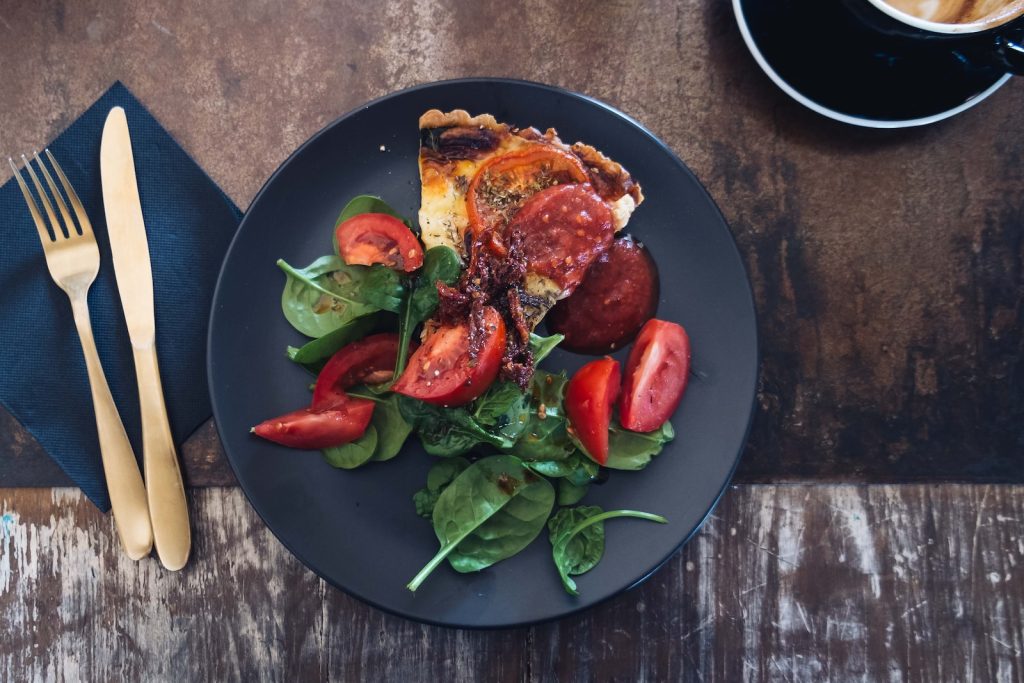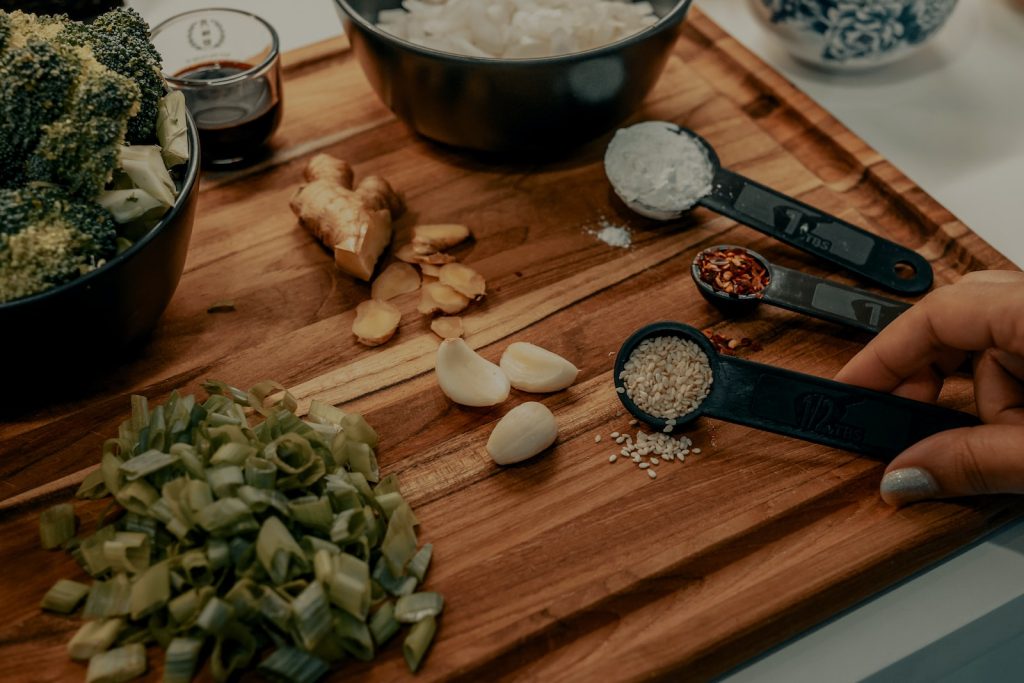Do you want to eat better but are concerned about the cost? Consuming nutritious, well-balanced meals does not have to be expensive. You may have tasty, budget-friendly meals that are excellent for both your body and your pocketbook by following a few easy ideas and methods. In this post, we’ll give you some tips for eating healthily on a budget, including budget-friendly recipes and meal prep ideas.
What is the significance of healthy eating?

Before we get into our recommendations for eating healthily on a budget, let’s talk about why eating well is so essential. A diet high in fruits, vegetables, whole grains, lean proteins, and healthy fats will help you maintain a healthy weight, lower your risk of chronic illnesses such as heart disease and diabetes, and enhance your overall health.
Regrettably, many individuals find it difficult to consume a nutritious diet because they feel it is too costly. Nevertheless, with a little ingenuity and organisation, you can prepare healthy meals while staying within your budget.
Budget-Friendly Eating Strategies
Here are some budget-friendly strategies and methods for eating healthy:
1. Plan your meals in advance.

One of the easiest ways to save money on food is to plan your meals in advance. By planning your meals for the week ahead, you can make a shopping list and buy only the ingredients you need. This will help you avoid impulse buys and reduce waste.
2. Shop for sales
When you’re trying to eat healthy on a budget, it’s important to be a savvy shopper. Look for sales on healthy foods like fresh produce, lean proteins, and whole grains. You can also save money by buying in bulk and shopping at discount stores.
3. Buy frozen fruits and vegetables.
Fresh produce can be expensive, especially if it’s out of season. Fortunately, frozen fruits and vegetables are a great budget-friendly option. They are often just as nutritious as fresh produce and can be stored for longer periods of time.
4. Cook at home.

Eating out can be a budget buster, so try to cook at home as much as possible. Cooking at home allows you to control the ingredients and portion sizes, which can help you save money and eat healthier.
5. Use meat as a flavouring.
Meat can be expensive, so try using it as a flavouring rather than the main focus of your meals. You can add a small amount of lean protein, like chicken or tofu, to a vegetable stir-fry or salad for a filling and nutritious meal.
6. Make Your Own Snacks
Processed snacks can be expensive and unhealthy. Instead, try making your own snacks at home. You can make a big batch of granola, roasted nuts, or trail mix and portion it out for a healthy, budget-friendly snack.
7. Try meatless meals.
Meatless meals are often less expensive than meals that include meat. Plus, they can be just as filling and nutritious. Try making a vegetable lasagna, lentil soup, or black bean tacos for a budget-friendly and tasty meal.
8. Eat seasonally.

Eating foods that are in season can help you save money and eat healthier. Seasonal produce is often less expensive and more flavorful than out-of-season produce.
9. Use Leftovers
Don’t let leftovers go to waste! Instead, use them to make new meals. You can use leftover chicken to make a salad or wrap, or turn leftover vegetables into a stir-fry.
10. Invest in meal prep containers.
Meal prep can help you save time and money. By preparing your meals in advance and storing them in meal
prep containers, you can avoid the temptation to grab fast food or eat out. Invest in some good quality containers to make meal prep a breeze.
11. Use Cheaper Cuts of Meat
If you do want to include meat in your meals, try using cheaper cuts of meat. These cuts can be just as tasty and nutritious as more expensive cuts when prepared properly. You can also use slow-cooking methods to make tougher cuts more tender and flavorful.
12. Make Your Own Sauces and Dressings
Store-bought sauces and dressings can be expensive and loaded with preservatives and other additives. Try making your own sauces and dressings at home using simple ingredients like olive oil, vinegar, and herbs. This will not only save you money but also allow you to control the ingredients.
13. Shop at Farmers Markets
Farmers markets can be a great place to find fresh, locally grown produce at affordable prices. You can often find deals on fruits and vegetables that are in season and support local farmers at the same time.
14. Don’t Waste Food

Food waste is a major problem, and it’s also a waste of money. Try to use up all of your ingredients before they go bad. You can also freeze leftovers or use them to make new meals.
15. Be Creative
Eating healthy on a budget doesn’t have to be boring. Get creative with your meals and try new recipes. You can also experiment with different flavor combinations and spices to make your meals more interesting.
Budget-Friendly Recipes
Here are some budget-friendly recipes that are nutritious and delicious:
1. Chickpea Salad
Ingredients:
- 1 can chickpeas, drained and rinsed
- 1/2 red onion, chopped
- 1 red bell pepper, chopped
- 1/4 cup chopped fresh parsley
- Juice of 1 lemon
- 2 tablespoons olive oil
- Salt and pepper to taste
Instructions:
- In a large bowl, combine the chickpeas, red onion, red bell pepper, and parsley.
- In a small bowl, whisk together the lemon juice, olive oil, salt, and pepper.
- Pour the dressing over the chickpea mixture and toss to combine.
- Serve chilled.
2. Vegetable Stir-Fry
Ingredients:
- 2 tablespoons vegetable oil
- 2 cloves garlic, minced
- 1 tablespoon grated ginger
- 1 red bell pepper, sliced
- 1 yellow bell pepper, sliced
- 1 zucchini, sliced
- 1 carrot, sliced
- 1/4 cup soy sauce
- 2 tablespoons honey
- 1 tablespoon cornstarch
- Salt and pepper to taste
Instructions:
- Heat the vegetable oil in a large skillet over medium-high heat.
- Add the garlic and ginger and cook for 1 minute.
- Add the bell peppers, zucchini, and carrot and cook for 5-7 minutes, or until the vegetables are tender.
- In a small bowl, whisk together the soy sauce, honey, cornstarch, salt, and pepper.
- Pour the sauce over the vegetables and stir to coat.
- Serve over rice or noodles.
Conclusion
Eating healthy on a budget is all about being creative and resourceful. By planning your meals in advance, shopping smart, and making your own meals, you can enjoy delicious, nutritious meals without breaking the bank. Remember to be mindful of food waste and use up all of your ingredients before they go bad. With these tips and tricks, you can make healthy eating a sustainable part of your lifestyle.

